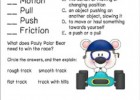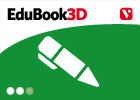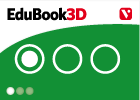Cargando...
Recursos educativos
-
Nivel educativo
-
Competencias
-
Tipología
-
Idioma
-
Tipo de medio
-
Tipo de actividad
-
Destinatarios
-
Tipo de audiencia
-
Creador
Lo más buscado
-

End-of-unit activities - The Baroque Age
EduBook Organización
- 5865 visitas
The 17th century was a period of contrasts in Europe. There were demographic problems and a crisis in agricultural production. However, at the same time new trade routes were established and…
-

Renaissance art
EduBook Organización
- 5823 visitas
Renaissance art originated in Italy. It can be divided into two periods: the Quattrocento, which developed in Florence in the 15th century, and the Cinquecento, which originated in Rome in the 16th…
-

19 Fun Ideas & Resources for Force and Motion - Teach Junkie
Jordi Mulet Docente
- 1 lo usan
- 5522 visitas
Teach force and motion with style by using experiments free printables and resources that will help bring science concepts alive. This collection of force and motion ideas should help you cover the…
-

Final self-evaluation 10.10 - The Baroque Age
EduBook Organización
- 5030 visitas
Match the sentences with the correct theme: England and the Netherlands open up new Atlantic and Indian routes. The redrawing of Europe's political map, the consolidation of nation-states and…
-

Check. Romanticism: a passion for life
EduBook Organización
- 4777 visitas
Remember what you have studied in this section and answer the questions: How did the style of paintings created in the Romantic era differ from those produced in the neoclassical period? What were the…
-

Art at the end of the 18th century
EduBook Organización
- 4765 visitas
1.1. Rococo art in Europe Rococo art first appeared in France in the 18th century and later spread throughout Europe. It was elegant and refined, and reflected the tastes of the aristocracy and the…
-

Self-evaluation 5.06 - The Great Peninsular Kingdoms
EduBook Organización
- 4589 visitas
Choose the correct answer: Which Aragonese monarch incorporated Pamplona into his kingdom? What was the significance of the Battle of Navas de Tolosa? What was the role of the Cortes in the Crown of…
-

Architecture in the second half of the 19th century
EduBook Organización
- 4553 visitas
3.1. Historicism In the middle of the 19th century, nationalist ideals prompted people to look to their past, mainly to the Middle Ages, in an attempt to find their roots. Architects reflected this…
-

True/false. The medieval city
EduBook Organización
- 4503 visitas
Are the following statements true or false?: Between the 10th and 11th centuries, the city and urban life were reborn. A prosperous bourgeoisie developed made up of merchants, artisans and bankers.…
-

Gothic art
EduBook Organización
- 4359 visitas
5.1. New architecture Beginning in the 14th century, taller, lighter buildings became popular. This led to a new style of art called Gothic art. In cities, many Gothic buildings began to be constructed,…
Te estamos redirigiendo a la ficha del libro...













